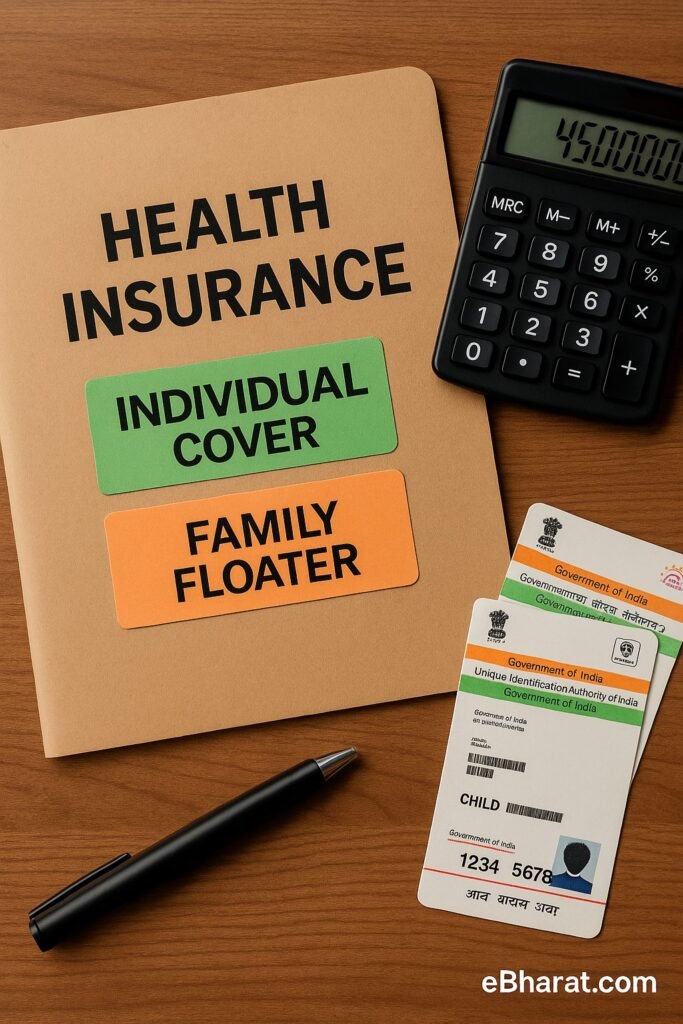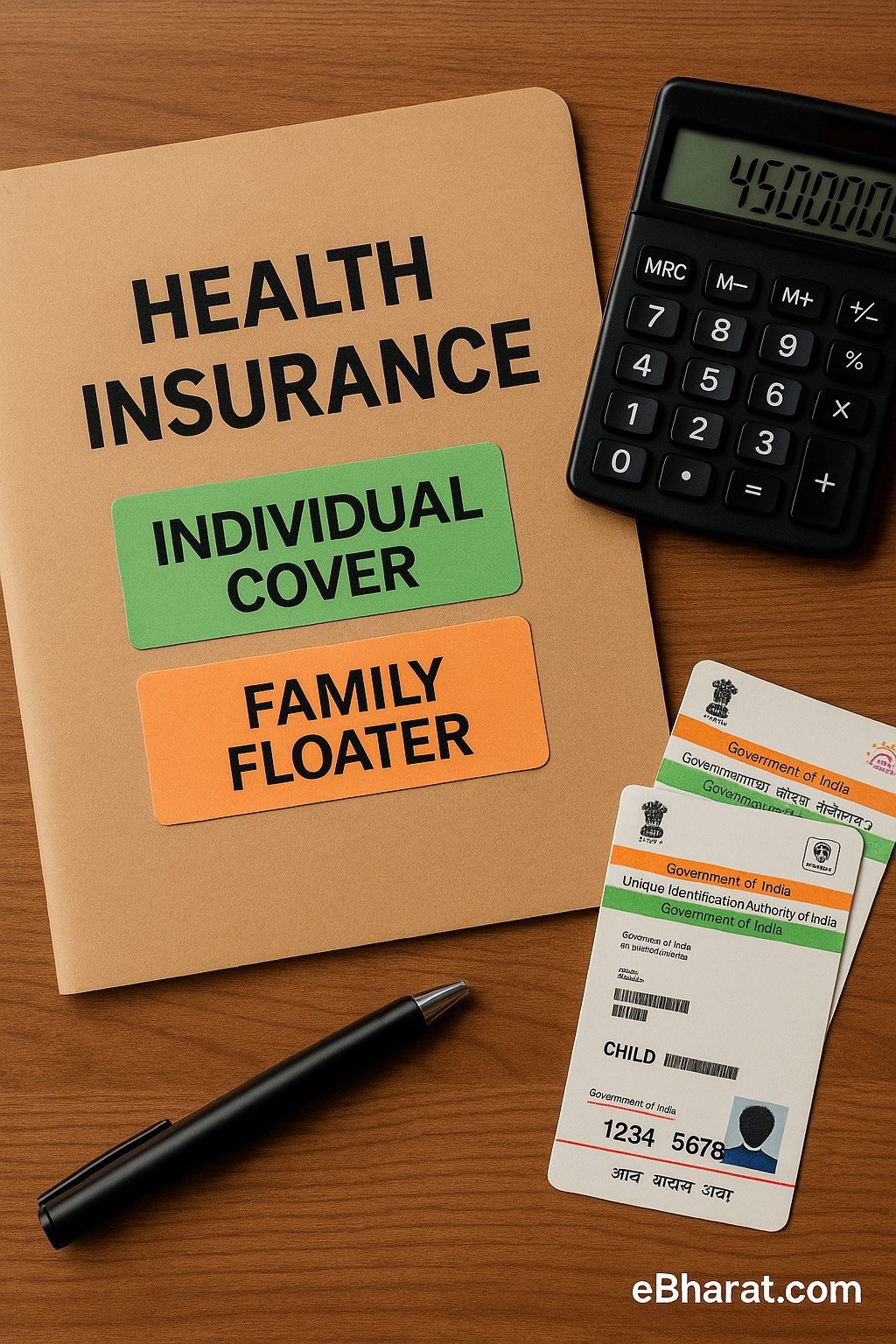
If you’re a family of three or four — say, a couple with one or two kids — buying health insurance seems straightforward.
But one key question always causes confusion:
Should you buy individual policies for each person or go for a family floater plan?
Agents often push floaters saying, “It’s cheaper and more convenient!” But the truth is, what works best depends on your family’s age mix, health risks, and budget.
Let’s break it down simply.
What Is an Individual Health Insurance Plan?
An individual plan gives each person a separate sum insured and policy.
For example:
If you buy ₹5 lakh cover each for you, your spouse, and your child — your family’s total protection is ₹15 lakh (₹5L x 3).
The premium is based on each person’s age and health, and one person’s claim doesn’t affect the others.
Good for families with diverse age groups or known medical needs.
What Is a Family Floater Plan?
A family floater offers one shared sum insured for the entire family — typically for self, spouse, and kids (some also allow parents).
So if you buy a ₹10 lakh floater plan, your family shares this ₹10 lakh coverage in total, across all claims in a year.
The premium is based on the oldest family member covered.
Ideal for young, healthy families with low expected claims.
Key Differences That Actually Matter
| Factor | Individual Plan | Family Floater |
|---|---|---|
| Sum Insured | Separate for each member | Shared among all |
| Premium | Higher (total of all) | Lower (usually) |
| Claim Usage | No impact on others | One claim reduces total pool |
| Age Factor | Premium based per person | Premium based on eldest member |
| Best For | Different age/health needs | Young, healthy nuclear families |
When a Floater Plan May Backfire
Floaters aren’t always the safest bet. Here’s when they might hurt you:
- One member is much older — say, father is 58 and child is 5. The premium shoots up because of the older person, and one large claim can exhaust the entire cover.
- Chronic illness in the family — a diabetic or heart patient may end up using most of the sum insured, leaving little for others.
- Adding more members later — such as elderly parents or a second child, may spike the premium or complicate renewals.
When Family Floaters Work Well
- Both parents are under 40, and kids are young and healthy
- You want affordable premiums with moderate health risks
- Your floater coverage is ₹10–15 lakh or more, providing enough room for multiple small claims
Floaters are perfect for smaller families in early stages of life with no major medical history.
Pro Tip: Mix & Match for Best Value
A smart approach many families take:
- Family floater for self + spouse + child (₹10–15 lakh)
- Separate individual policy for older parents (₹5–7 lakh)
- Super top-up plan for everyone as medical inflation rises
This way, you keep costs in check but avoid coverage risks.
Final Word
Family floaters are budget-friendly, but they aren’t always the most secure — especially when family members have different ages or health risks.
If your family is young and healthy, a floater works great.
But if you can afford it, separate policies for older members (like parents) + a floater for your nuclear unit offer better peace of mind.
And remember:
Compare plans, read exclusions, and check claim limits — not just the premium.













